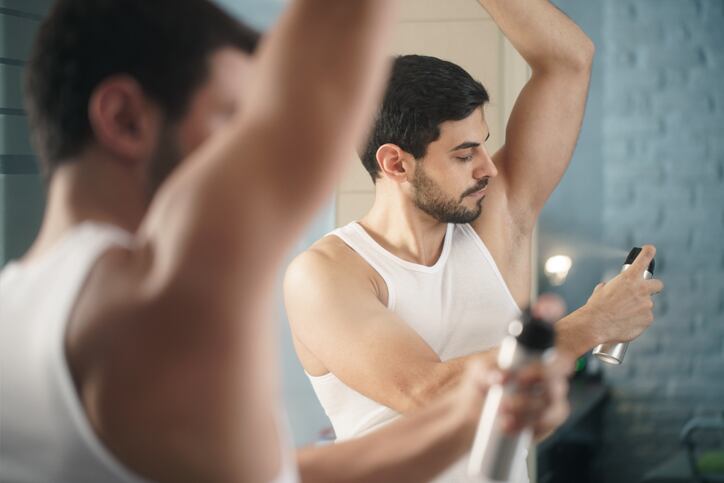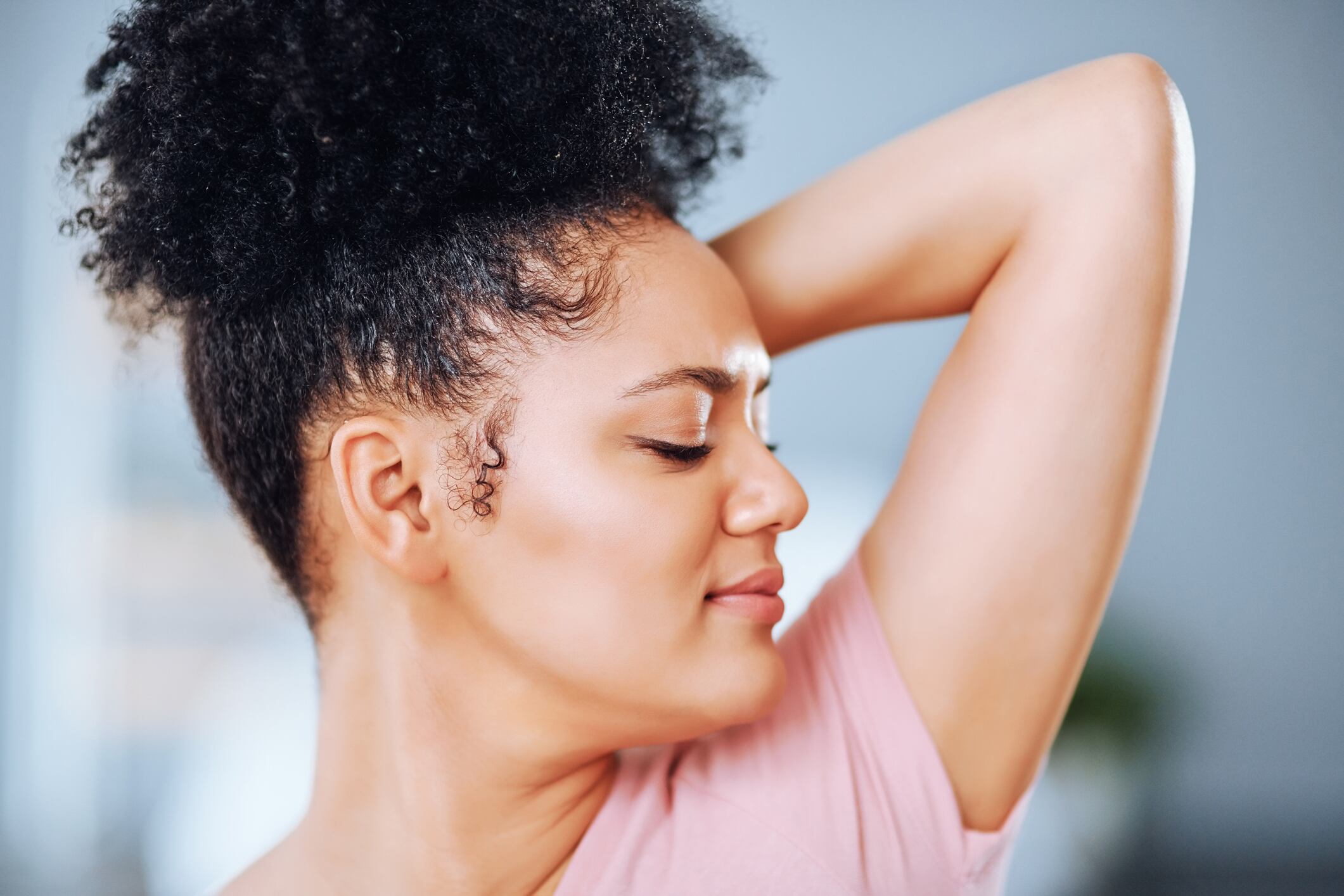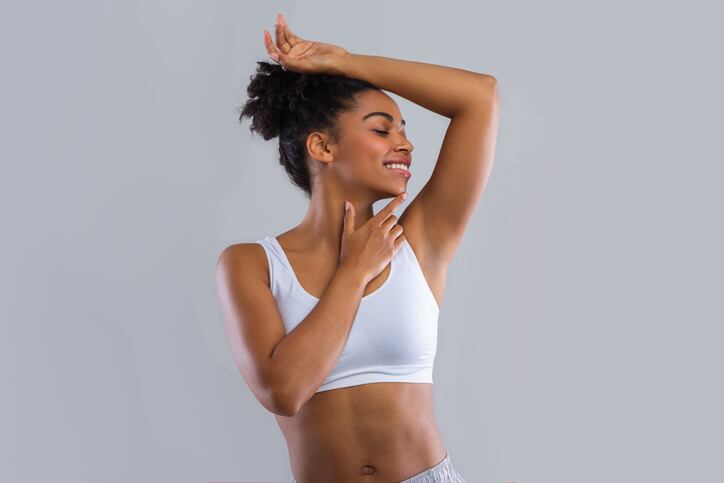Writing in two separate international patent filings [Patent I & Patent II], Unilever said it had developed a leave-on antiperspirant composition without use of traditional astringent metal salts, such as aluminium or zirconium.
Instead, it had developed a blend from a film forming polymer, solvent and plasticizer [Patent I] and a blend from a film forming polymer, solvent and filler [Patent II]. These compositions, it said, worked to reduce perspiration and could be incorporated into topical cosmetic deodorants and, in some cases, used to therapeutically treat hyperhidrosis or extreme sweating. Whilst the topical product could be used on any area of skin prone to sweating, including the neck, chest, hands and scalp, Unilever said the blend had been designed with the axilla or underarm area in mind.
The antiperspirant composition was also best suited to aerosol formats but could be used in gel or stick form, delivered through a roll-on device, the company said. In some instances, it could also be formulated into a product that was applied to the body for improved appearance, cleansing, odour control or general aesthetics, it said.
‘Similar or better efficacy’ compared to aluminium-based actives
Unilever said that whilst efforts had been made to develop metal-free alternatives to traditional antiperspirants – including in-house at Unilever with a hydrophobically-treated clay and by beauty major L’Oréal with monoalcohol – there remained a need for compositions that exhibited “better and better efficacy”.
“It is thus an object of the present invention to provide for an antiperspirant composition which exhibits high antiperspirant efficacy while having reduced astringency,” Unilever wrote in its patent filing – an object it said it had achieved.
“The present inventors with their extensive research in the field of such actives have hit upon a formulation which is a combination of a specific film forming polymer of modified cellulose, an organic solvent and a plasticizer which is found to have similar or better efficacy as compared to that of well-established aluminium based actives,” the company wrote in its patent filings.
Material selection – film forming polymer, organic solvent and plasticizer
For the film forming polymer, Unilever said it was ideally selected from an alkyl cellulose, preferably ethyl cellulose, that had a solubility in water of less than 1 wt%. For the second ingredient, an organic solvent, it said it was important to ensure a Hansen Solubility Parameter of 18-28 MPa1/2 – a measure used to determine the degree of compatibility and miscibility of two materials. Suitable organic solvents included ethanol, toluene, glycol ethers or isododecane.
Unilever said the plasticizer, outlined in Patent I, was used to “reduce the brittleness and increase the flexibility” of the film formed once the product was applied to the skin. In other words, it said this ingredient increased the elasticity of the film, making it feel softer. Unilever said the plasticizer could be selected from one or more sources, including polypropylene oxide, triethyl citrate, cottonseed oil, cetyl alcohol or stearyl alcohol, among others.
In Patent II, Unilever said the composition required a filler, selected either from MQ resin, silica or clay, ideally included at a rate of 2.5-15% by weight of the composition. The filler and plasticizer were two components recommended in both patents.
Antiperspirant action – ‘occlusive film over the sweat ducts’
“Without wishing to be bound by theory, the inventors believe that polymers like ethyl cellulose form a uniform occlusive film over the sweat ducts after application and thereby reduce perspiration. Ethyl cellulose in combination with the right solvent and plasticizer forms a robust and adherent film on the skin even in the presence of sweat,” Unilever wrote in its first patent filing.
In the second patent filing, the company said it was the combination of ethyl cellulose with the right solvent or mixture of solvents that formed the robust and adherent film on the skin. It did, however, add that “strength and other sensory characteristics” of the film were enhanced by the inclusion of a plasticizer.
Depending on the delivery format – aerosol or roll-on – certain carriers were required, Unilever said. For aerosols, a propellent with a low boiling point was needed like alkanes or halogenated hydrocarbons. For roll-on formulas, acceptable carriers were those considered hydrophobic or aqueous.
The company said a range of additional ingredients could also be added in to the antiperspirant composition, including antioxidants, colorants, fragrance, conditioners, exfoliating agents, preservatives, natural extracts, skin soothing agents and even skin healing agents.
Patent I Source: WIPO International Patent No. WO/2021/224133
Published on: November 11, 2021. Filed on: April 30, 2021.
Title: “An antiperspirant composition”
Inventors: Unilever – S. Allahbash and SK. Barne
Patent II Source: WIPO International Patent No. WO/2021/224167
Published on: November 11, 2021. Filed on: May 5, 2021.
Title: “An antiperspirant composition”
Inventors: Unilever – S. Allahbash and SK. Barne




